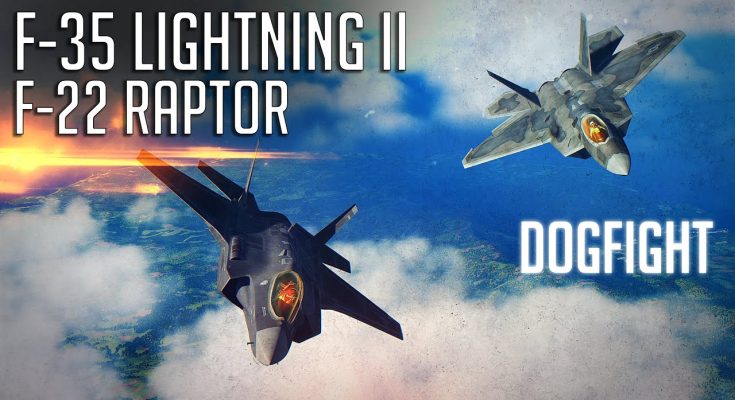F-22 Raptor vs. F-35 Lightning II Dogfight | Digital Combat Simulator
The clash between the F-22 Raptor and the F-35 Lightning II is one of the most anticipated matchups in modern air combat discussions. While both jets represent the pinnacle of American aerospace engineering, they serve distinctly different roles. The F-22 is the king of air superiority, optimized for dogfighting and stealth dominance. The F-35, on the other hand, is a multirole stealth fighter with advanced sensors and networked warfare capabilities. In a simulated digital dogfight environment like Digital Combat Simulator (DCS), these differences become dramatically clear — and thrilling to watch.
Performance & Maneuverability
In a pure dogfight scenario within DCS, the F-22 Raptor almost always holds the edge in close-quarters maneuvering. It was built for that purpose. With thrust-vectoring nozzles, a higher thrust-to-weight ratio, and superb aerodynamics, the Raptor can out-turn and out-climb the F-35. The Raptor’s supercruise capability (sustained supersonic flight without afterburner) allows it to maintain speed and energy in a dogfight, while the F-35’s engine is powerful but less agile in high-G engagements.
During simulated 1v1 engagements, DCS players often find the F-22 can get behind the F-35 faster and sustain pressure, especially in neutral merges. Its ability to perform post-stall maneuvers like the Herbst maneuver or a high-alpha pirouette gives it an almost unfair advantage in close-range fights.
Stealth & Situational Awareness
But don’t count the F-35 out too quickly. What it lacks in raw dogfighting capability, it makes up for in sensors and stealth. The F-35 is practically a flying data fusion machine. With its advanced AN/APG-81 AESA radar, Distributed Aperture System (DAS), and Electro-Optical Targeting System (EOTS), it can spot threats and lock on from beyond visual range (BVR) before the enemy even knows it’s there. In DCS, this gives F-35 pilots a significant advantage in long-range engagements, where the F-22’s stealth can be comparable but not necessarily superior in sensor range.
In team-based DCS missions, the F-35 excels when paired with AWACS and friendly assets. It can serve as a battlefield coordinator, relaying data and silently engaging threats from a distance. However, once the fight gets close and visual, it struggles to keep pace with the Raptor.
Weapons & Combat Strategy
Both aircraft in DCS can carry a mix of AIM-120 AMRAAMs for BVR and AIM-9X Sidewinders for close-range engagements. The F-22, with its higher speed and superior climb rate, can execute hit-and-run tactics more effectively. The F-35’s advantage lies in sneak attacks and playing smart — picking off threats before they even enter visual range, then using its stealth and agility to disengage if needed.
Final Verdict in DCS
In DCS dogfights, the F-22 generally dominates in close combat, especially in experienced hands. But the F-35 can win through superior strategy, patience, and intelligent use of its sensor fusion and stealth. Ultimately, it’s a battle of brute aerial force versus surgical precision — and that’s what makes every encounter between these two fifth-gen titans a must-watch.
Whether you’re flying solo or as part of a squadron, an F-22 vs. F-35 showdown in DCS is a thrilling, tactical chess match in the sky.



